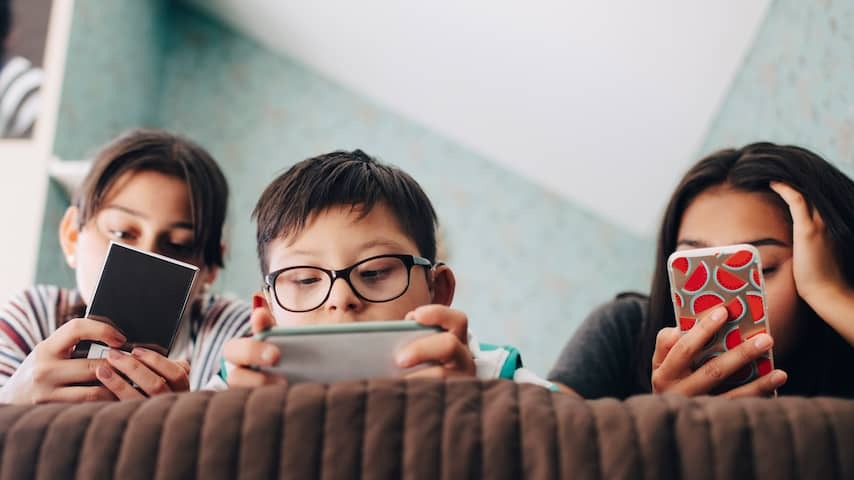
If your eyes are damaged by frequently scrolling on your phone, can you reverse that with a digital detox, lots of carrots, or screen glasses?
Just put your phone away for three weeks and hope things get better? No, that’s not how it works, according to Marianne Resoort of the Dutch Eye Association. Nearsightedness can be corrected with glasses or lenses, but not cured by training your eyes.
Nearsightedness, or myopia, is an eye condition in which the eyeball has become slightly deformed. The eye is no longer perfectly round, but has grown somewhat elongated, causing the image to fall in front of the retina instead of on it. As a result, you see blurry in the distance, but you can see everything well up close, Resoort explains. Like your screen.
By looking at an object up close a lot and for a long time, whether it’s a screen, a book, a tower of blocks, or something else, your eye will have trouble getting the image in the distance sharp, Resoort explains. Screen glasses are not intended to solve that problem; they are meant to filter the blue light from a screen. And a healthy lifestyle, including the well-known carrots that are good for the eyes, can prevent eye diseases, but not if the damage has already been done.
Ariane is (far from) the only one
Nearsightedness often develops between the ages of six and sixteen, says Caroline Klaver, ophthalmologist and professor of genetics of eye diseases at Erasmus MC. During this period, eyes grow and are ‘set’ for the rest of life. Around the age of nine, 10 to 11 percent are already nearsighted, according to Klaver’s research into more than ten thousand children. This nearsightedness has increased enormously as more digital devices became available to children.
If we extrapolate this development and take into account the results of an English study among older children, it seems that soon 50 percent of people will no longer be able to see sharply at a distance by the time they are twenty. The princess, who is seventeen years old, is certainly not the only one.
Children who spend a lot of time outside, at least two hours, hardly have nearsightedness, and so that needs to become much more common, says Klaver.
In the world of ophthalmologists, the 20-20-2 rule is recommended: after looking at something up close for 20 minutes, look into the distance for 20 seconds. And spend at least 2 hours a day outside. Resoort: “A child’s eye is developing rapidly, so make sure the eye sees many different distances.”
How much screen time is okay?
If your child is behind a screen from time to time, that’s not directly a problem, as long as you apply the rules of thumb below. At the Oogfonds (Eye Fundation) they make a distinction per age.